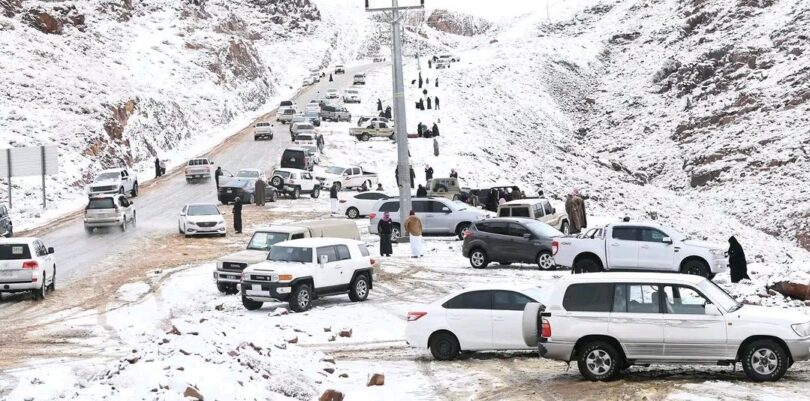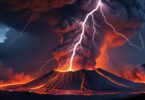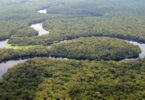On November 3, 2024, something unexpected happened in Saudi Arabia’s Al-Nafūd Desert in Al-Jawf—a snowfall. This is the first time in recorded history that snow has been seen in the desert, which left both locals and the world in awe. Social media quickly buzzed with pictures and videos, including scenes of camels cautiously walking on the icy landscape. It was a rare moment that captured the imagination of many.
Why Did It Snow in the Desert?
According to the UAE National Center of Meteorology, the snowfall was caused by a low-pressure system moving in from the Arabian Sea. This system brought in moist air, which triggered thunderstorms, hail, and, eventually, snow in this usually dry region. The snow affected not just Saudi Arabia but also neighboring parts of the UAE, leading to weather warnings.
In a place like Al-Jawf, where temperatures can soar as high as 55°C, seeing snow was especially surprising. The moist air, carried by the low-pressure system, collided with colder temperatures in the upper atmosphere, creating the conditions for snow. This rare weather event stood in stark contrast to the intense heat that the desert is known for.

Can Deserts Get Snow?
While it might seem impossible for a desert to experience snow, it’s actually not as rare as it seems. Deserts, like the Sahara, have had frost and snow in the past. Snow forms when cold temperatures meet moisture, and while deserts are typically dry, they can still experience these conditions under the right circumstances. For example, the Atlas Mountains in Morocco, which are located in a desert region, regularly see snow.
So, while snow in Saudi Arabia’s desert is rare, it’s not entirely impossible. In fact, snow is more common in desert regions with higher elevations, where cool air meets moist conditions.
The Bigger Picture: Climate Change and Extreme Weather
This snowfall, although fascinating, serves as a reminder of how unpredictable weather has become. The World Bank notes that the Middle East, including Saudi Arabia, is one of the regions most vulnerable to the effects of climate change. With global temperatures on the rise, weather events like this may become more frequent.
Along with the snow, Riyadh, Saudi Arabia’s capital, faced heavy rainfall and flooding. These extreme weather events are becoming more common, with areas that used to experience stable weather patterns now dealing with more erratic conditions. This makes it clear that the region could see more unexpected weather in the future, including more desert snow.
The Changing Climate in the Middle East
The snow in the Al-Jawf Desert is just one example of the climate shifts happening in the Middle East. As temperatures rise globally, regions like Saudi Arabia are seeing more extreme weather, including storms, heavy rainfall, and flooding. While the snowfall was a rare occurrence, it highlights a bigger issue: the changing climate and its impact on the world’s weather.
The snowfall in Saudi Arabia’s Al-Jawf Desert is a reminder that even the most unexpected weather events can happen. It also serves as a wake-up call about the need to pay attention to climate change and its effects on the world. What we saw in the desert may be just a glimpse of how the future could look in a warming world.









